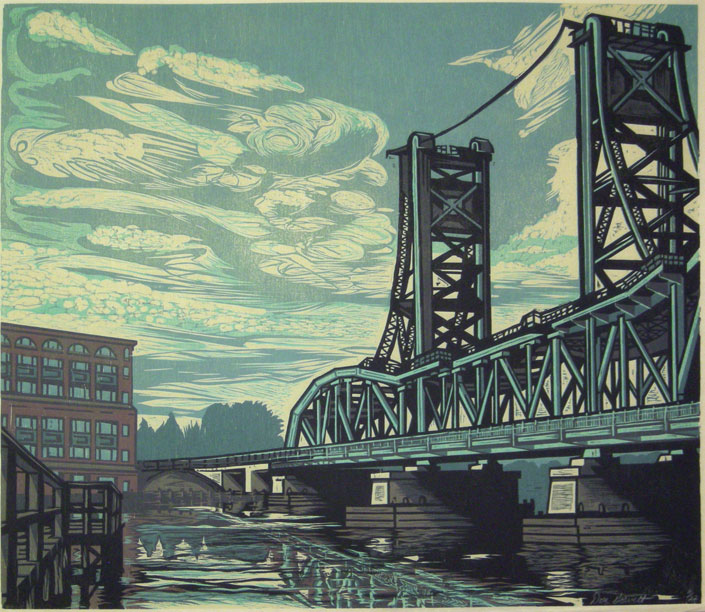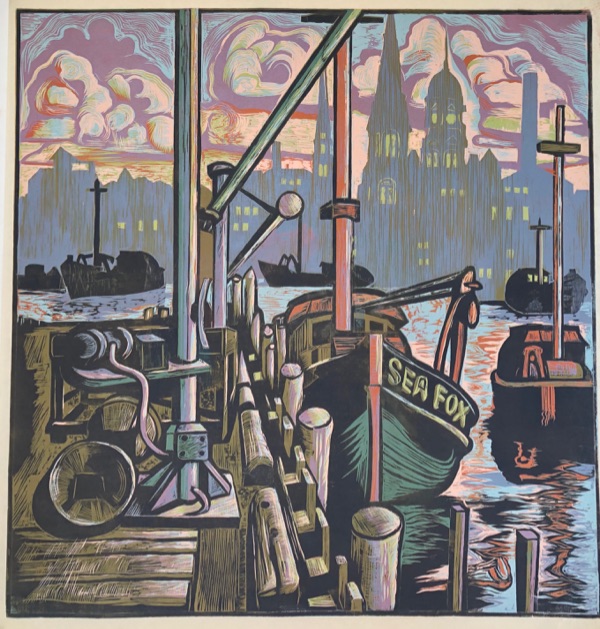RESCHEDULED: Spring/Summer 2021
Balcony Gallery at the Portsmouth Historical Society
A Massachusetts native, Don was born in Boston in 1949 and spent his youth in Cambridge and Somerville, Massachusetts. He loved the seashore where he swam and fished, and learned about New England’s seafaring industry. When his family moved to Burlington, Massachusetts, Gorvett’s high school art instructor Elinor Marvin recognized the talent of her young student and privately tutored him. His exceptional art education focused on drawing, graphic arts, and especially theatrical set design.
After high school, Gorvett met a benefactor who generously supplied the young artist with a one-room cabin, just off Berwick Road in Ogunquit, Maine. From this summer studio, which Gorvett occupied from 1968 to 1984, he would bike to the ocean daily with his paints, French easel, and canvases.

As a high school senior, Gorvett won the Ford Junior Fellowship to the School of the Museum Fine Arts. There, Gorvett spent much time sketching and painting along Boston’s working waterfront, the start of his lifetime fascination with the commercial and industrial lifelines at the water’s edge.
After graduation, Gorvett moved to a theatre on the grounds of Stillington Hall, a large Jacobean estate in Gloucester, on Boston’s North Shore, owned by heiress Mary Buswell. Gorvett took up residence in its well-furnished dressing rooms and used the stage for his first etching press. There he produced a series of large-scale woodcuts based on Richard Wagner’s operatic tetralogy “The Ring of the Nibelung.” He also created a series of drypoint etchings of the Gloucester waterfront and began to explore possibilities of large-scale woodcuts.

In 1990, Don Gorvett returned to Ogunquit, Maine, where he reunited with his former teacher Elinor Marvin, caring for her until her death in 2015 at age 100. In Ogunquit, Gorvett further explored the technique of reduction woodcuts depicting that and other harbors. Then Gorvett moved his gallery and studio to the still-active working waterfront of Portsmouth, N.H. With his chosen medium of reduction woodcut, Gorvett marries the maritime rusticity of seaside communities with the abstract geometric shapes and configurations of the region’s coastal architecture.
A true, full-time working artist, Gorvett can be found in his small studio and gallery on Market Street in historic downtown Portsmouth year round. His work has been shown regularly since 1988 in more than a dozen public exhibitions at colleges, commercial galleries, and museums locally and as far away as West Germany and Hanoi.
